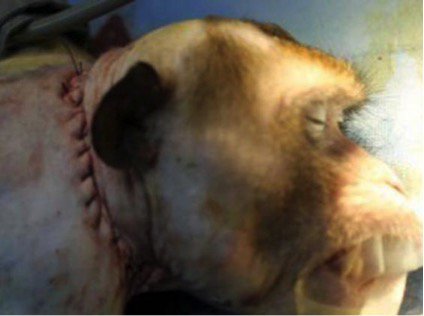-
Tips for becoming a good boxer - November 6, 2020
-
7 expert tips for making your hens night a memorable one - November 6, 2020
-
5 reasons to host your Christmas party on a cruise boat - November 6, 2020
-
What to do when you’re charged with a crime - November 6, 2020
-
Should you get one or multiple dogs? Here’s all you need to know - November 3, 2020
-
A Guide: How to Build Your Very Own Magic Mirror - February 14, 2019
-
Our Top Inspirational Baseball Stars - November 24, 2018
-
Five Tech Tools That Will Help You Turn Your Blog into a Business - November 24, 2018
-
How to Indulge on Vacation without Expanding Your Waist - November 9, 2018
-
5 Strategies for Businesses to Appeal to Today’s Increasingly Mobile-Crazed Customers - November 9, 2018
Head transplant successfully done on a monkey?
A maverick surgeon who plans to transplant a human head onto another body has successfully performed the operation on a monkey, he claims.
Advertisement
According to Canavero, researchers led by Xiaoping Ren at Harbin Medical University, China, have carried out a head transplant on a monkey.
Fusing the spinal cord of a person is going to be key to successfully transplanting a human head onto a donor body.
“The monkey fully survived the procedure without any neurological injury of whatever kind”, Canavero said, according to New Scientist.
Other techniques to aid recovery could include spinal cord stimulation and the use of a negative pressure device to encourage the nerves to fuse, the New Scientist reported.
Russian Valery Spriridonov, 31, who has a genetic muscle-wasting disease, has put himself forward for the risky procedure.
A photo of a monkey with visible stitches on its neck has been making its rounds online, along with a doctor’s claims that his team has taken another step closer to realising their dream of carrying out a human head transplant. Dr Canavero has said that he will need a huge amount of money to fund the team of surgeons and scientists involved, and that he intends to ask Mark Zuckerberg to help fund it.
The claims were outlined by controversial Italian surgeon Dr. Sergio Canavero during a January 19 interview with New Scientist.
Canavero said: “It’s important that people stop thinking this is impossible”. And a monkey head transplant isn’t something completely out of left field-in fact, the first successful monkey head transplant was performed more than 35 years ago by Robert J. White.
Canavero did add, though, that he will publish details of his work in the journals Surgery and CNS Neuroscience & Therapeutics in the upcoming months.
“It’s science through public relations”, Arthur Caplan, a bioethicist at New York University School of Medicine told New Scientist.
Last year, Sergio Canavero had presented for more than two hours at the American Academy of Neurological and Orthopaedic Surgery its project called Heaven (Head Anastomosis Venture) / AHBR (allogenic Head Body Reconstruction), relayed by the media drums.
The scientific peer-review process isn’t ideal, but announcing such potentially revolutionary results prior to publication, before they’re vetted, is generally seen as poor form. “I think the rest of it is B.S”.
Initially, the animal responded well but died after nine days when the body rejected the new head.
Advertisement
If nothing else, let’s hope that the research provides us with something that researchers have been pursuing for decades – a way to heal damaged spinal cords.





























